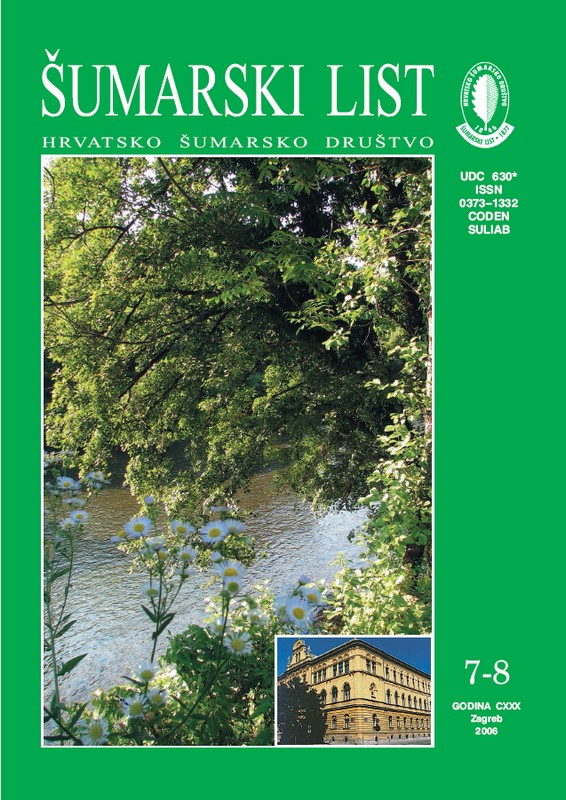
broj: 7-8/2006
pdf (20,9 MB) |
|
||||||||||||||
| IZVORNI ZNANSTVENI ČLANCI | ||
| Ballian, Dalibor | UDK 630* 165 (001) | |
| Controlling the Serbian Spruce Origin (Picea Omorika /Panč./ Purk.) at the Kakanj Plantation with Isoenzyme Markers pdf HR EN | 295 | |
| Summary: In this study we tried to identify and determine the origin of the Serbian spruce from the Kakanj plantation, covering the space of 8,2 ha, with the means of molecular genetic analysis. We applied the isoenzyme markers analysis to verify the obtained data from the molecular genetic identification of natural populations of Serbian spruce, and those from the said plantation. A total of 12 enzyme systems with 16 gene loci have been used, with 24 alleles analyzed. Based on the statistical analysis in the computer program BIOSYS-1 (Swofford & Selander 1981), according to Ballian et. al (2006), the genetic variability of 12 natural populations, where 16 isoenzyme loci were studied, strong differentiation was obtained (Fst = 0,261), but with exclusion of the Kakanj plantation which exhibited a rather low differentiation. Here we cannot speak about the presence of geographic genetic differentiation in the cline form. It was determined that alleles with the studied populations had randomly distributed frequencies. Out of the obtained results it is apparent that Serbian spruce plantation in Kakanj is poorly differentiated, and this supports the opinion of its mixed origin (according to Ballian et. al. 2006). If we take a more detailed look at the obtained dendrogram, which was obtained on the basis of genetic distance between the studied populations, where the Kakanj plantation occupies a totally unexpected position, this can additionally confirm its mixed origin. The results obtained through this study, by isoenzyme markers analysis, show that our present possibilities to confirm the origin of Serbian spruce are relatively limited. The offered system of identification by this method might in the future prove acceptable as the initial studies exhibited good results, even though we still cannot entirely systemize the analyzed plantation to certain population or populations. We should therefore continue with basic studies with the aim to create a more detailed genetic picture of the spruce populations, with larger number of enzyme systems, that is, gene loci, which would encompass all natural populations, and groups of trees in Bosnia and Herzegovina and Serbia, which is a long lasting and expensive effort. | ||
| Kremer, Dario | UDK 630* 164 + 233 (001) | |
| Morphological Differences Between White Ash (Fraxinus americana L.) and Green Ash (F. pennsylvanica Marshall) Introduced in Croatia pdf HR EN | 305 | |
| Prka, Marinko | UDK 630* 321 + 325 (001) | |
| Features of Assigned Beech Trees According to the Type of Felling in the Felling Areas of Bjelovarska Bilogora and their Influence on the Assortment Structure pdf HR EN | 319 | |
| PREGLEDNI ČLANCI | ||
| Zelić, Juraj | UDK 630* 521 + 522 + 531 | |
| Do Trees in a Forest Grow by the Rules of the Golden Section and the Fibonacci Series? pdf HR EN | 331 | |
| STRUČNI ČLANCI | ||
| Rosavec, Roman | UDK 630* 272 | |
| Park-Forest “Komrčar” on the Island of Rab – Condition and Valorization pdf HR EN | 345 | |
| Šegrt, Viktor, E. Menđušić, G. Horvatović, M. Grubešić, K. Krapinec | UDK 630* 151 | |
| Injuries of Predator Birds – Data for 2005 pdf HR EN | 353 | |


